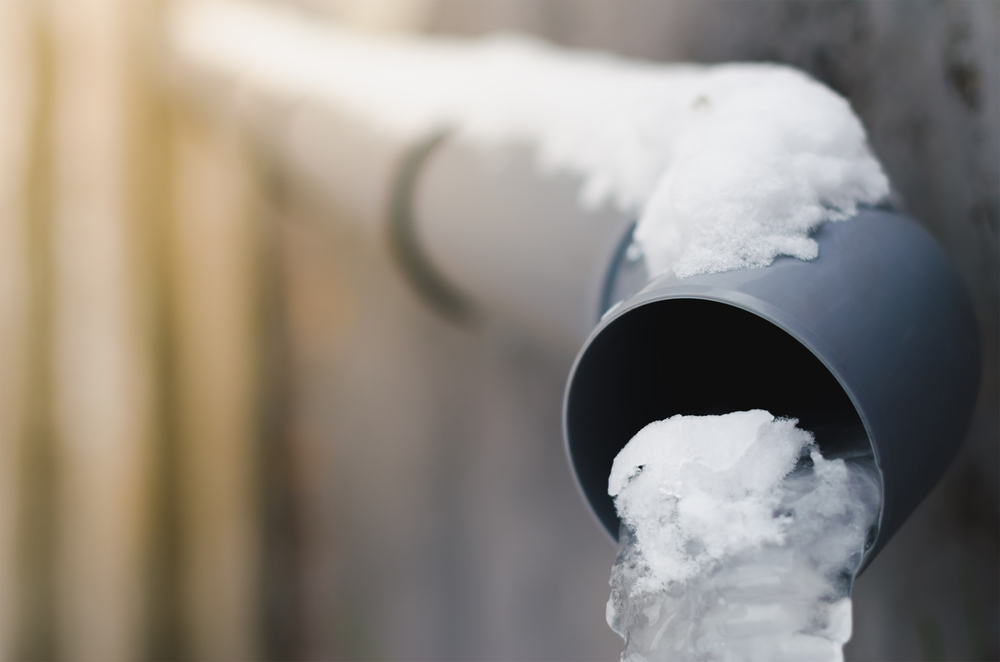This post in the next paragraphs about Winter Plumbing Precautions: Preventing Frozen Pipes is relatively enjoyable. Check it out for yourself and figure out what you think of it.
:strip_icc()/snow-outdoor-faucet-pipes-4af65d1e5e904fb1aa7bf74071fe5d89.jpg)
Cold weather can ruin your pipes, specifically by freezing pipes. Below's just how to stop it from taking place and what to do if it does.
Intro
As temperature levels decrease, the danger of frozen pipelines increases, possibly causing pricey repair services and water damages. Comprehending just how to avoid icy pipelines is vital for homeowners in chilly environments.
Recognizing Icy Pipes
What causes pipelines to freeze?
Pipelines freeze when subjected to temperatures below 32 ° F (0 ° C) for prolonged periods. As water inside the pipes freezes, it increases, taxing the pipeline walls and potentially causing them to rupture.
Dangers and problems
Icy pipelines can result in supply of water interruptions, home damage, and expensive repair services. Ruptured pipes can flood homes and trigger extensive structural damages.
Signs of Frozen Pipeline
Recognizing frozen pipelines early can prevent them from bursting.
Exactly how to determine icy pipelines
Try to find reduced water flow from taps, unusual odors or noises from pipelines, and noticeable frost on subjected pipes.
Avoidance Tips
Shielding at risk pipelines
Wrap pipelines in insulation sleeves or make use of warmth tape to secure them from freezing temperatures. Focus on pipes in unheated or exterior areas of the home.
Heating techniques
Maintain interior rooms properly heated, specifically locations with pipes. Open closet doors to enable cozy air to distribute around pipelines under sinks.
Protecting Outdoor Plumbing
Garden pipes and outdoor faucets
Detach and drain pipes yard tubes before winter season. Mount frost-proof faucets or cover outside faucets with shielded caps.
What to Do If Your Pipes Freeze
Immediate activities to take
If you think frozen pipelines, maintain taps available to alleviate pressure as the ice melts. Make use of a hairdryer or towels soaked in hot water to thaw pipelines slowly.
Long-Term Solutions
Architectural adjustments
Think about rerouting pipes far from exterior walls or unheated locations. Add extra insulation to attic rooms, cellars, and crawl spaces.
Updating insulation
Buy top quality insulation for pipelines, attics, and wall surfaces. Correct insulation aids maintain consistent temperature levels and decreases the risk of frozen pipes.
Conclusion
Stopping icy pipelines needs aggressive actions and quick reactions. By comprehending the causes, signs, and safety nets, house owners can shield their pipes during winter.
5 Ways to Prevent Frozen Pipes
Drain Outdoor Faucets and Disconnect Hoses
First, close the shut-off valve that controls the flow of water in the pipe to your outdoor faucet. Then, head outside to disconnect and drain your hose and open the outdoor faucet to allow the water to completely drain out of the line. Turn off the faucet when done. Finally, head back to the shut-off valve and drain the remaining water inside the pipe into a bucket or container. Additionally, if you have a home irrigation system, you should consider hiring an expert to clear the system of water each year.
Insulate Pipes
One of the best and most cost-effective methods for preventing frozen water pipes is to wrap your pipes with insulation. This is especially important for areas in your home that aren’t exposed to heat, such as an attic. We suggest using foam sleeves, which can typically be found at your local hardware store.
Keep Heat Running at 65
Your pipes are located inside your walls, and the temperature there is much colder than the rest of the house. To prevent your pipes from freezing, The Insurance Information Institute suggests that you keep your home heated to at least 65 degrees, even when traveling. You may want to invest in smart devices that can keep an eye on the temperature in your home while you’re away.
Leave Water Dripping
Moving water — even a small trickle — can prevent ice from forming inside your pipes. When freezing temps are imminent, start a drip of water from all faucets that serve exposed pipes. Leaving a few faucets running will also help relieve pressure inside the pipes and help prevent a rupture if the water inside freezes.
Open Cupboard Doors
Warm your kitchen and bathroom pipes by opening cupboards and vanities. You should also leave your interior doors ajar to help warm air circulate evenly throughout your home.

Do you really like reading about Preventing and dealing with frozen pipes? Write a remark directly below. We would be pleased to see your insights about this blog posting. Hoping to see you back again in the future. Those who appreciated our blog posting if you please do not forget to share it. Many thanks for your time. Return soon.
Request An Estimate